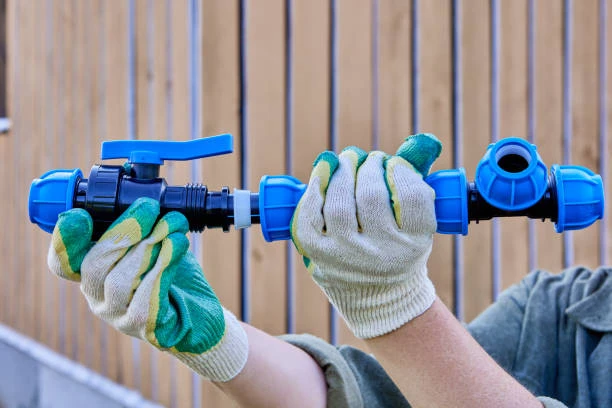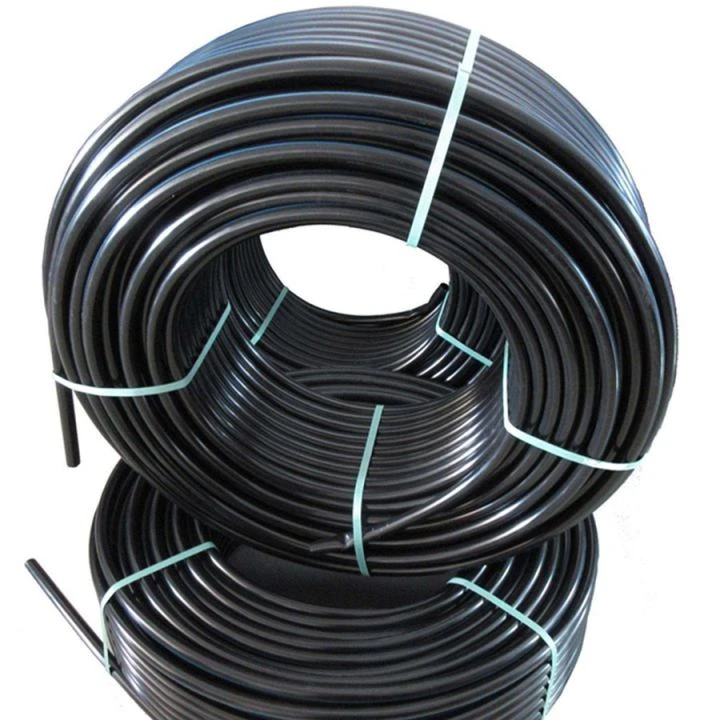Introduction
In today’s infrastructure development landscape, High-Density Polyethylene HDPE pipes and fittings are becoming increasingly vital due to their durability and versatility. Alwasail Industrial Company stands out as a key player in this field, specializing in HDPE products that comply with the GB/T 13663 standard. This comprehensive guide will delve into the features, benefits, and applications of HDPE pipes and fittings, focusing on the offerings from Alwasail Industrial Company.
What is HDPE?
High-Density Polyethylene (HDPE) is a thermoplastic polymer derived from petroleum. Its unique properties, including high strength and resistance to various chemicals, make it an ideal material for a range of applications, particularly in the piping industry. HDPE is known for its longevity, making it a reliable choice for both residential and industrial applications.
Understanding GB/T 13663
GB/T 13663 is a Chinese national standard that specifies the technical requirements for polyethylene pipes used in water supply systems. This standard is crucial for ensuring that HDPE pipes are safe and reliable for transporting drinking water. Compliance with GB/T 13663 guarantees that the materials meet high-quality standards, providing assurance to manufacturers, contractors, and consumers alike.
Key Features of HDPE Pipes and Fittings
1. Durability
One of the standout features of HDPE pipes is their exceptional durability. They are designed to withstand harsh environmental conditions and can last for over 50 years with proper installation and maintenance. This durability reduces the need for frequent replacements, resulting in long-term cost savings.
2. Chemical Resistance
HDPE pipes have excellent resistance to a wide range of chemicals, making them suitable for transporting various fluids without risk of degradation. This property is especially beneficial in industrial applications where corrosive substances are involved.
3. Flexibility
HDPE is inherently flexible, allowing for easy installation and adaptation to various terrains. This flexibility minimizes the risk of breakage during installation and helps accommodate ground movement.
4. Lightweight
Compared to traditional materials, HDPE pipes are significantly lighter, which simplifies transportation and installation. This lightweight nature reduces labor costs and accelerates project timelines.
5. Environmental Sustainability
HDPE is fully recyclable, making it an eco-friendly choice. The production of HDPE also has a lower environmental impact compared to other materials, aligning with the growing focus on sustainability in construction and infrastructure.
Benefits of Using Alwasail HDPE Pipes and Fittings
1. Compliance with Standards
Alwasail Industrial Company’s HDPE pipes and fittings are manufactured according to the GB/T 13663 standard, ensuring they meet all necessary safety and quality requirements. This compliance provides peace of mind for contractors and engineers involved in projects.
2. Versatile Applications
The HDPE pipes and fittings offered by Alwasail are versatile and suitable for various applications, including potable water supply, drainage systems, irrigation, and industrial use. This adaptability makes them a valuable asset for any construction project.
3. Cost-Effectiveness
While the initial cost of HDPE pipes may be higher than some alternatives, their durability and low maintenance requirements result in significant long-term savings. This makes Alwasail’s HDPE products a cost-effective solution.
4. Reliable Supply Chain
Alwasail Industrial Company is renowned for its reliability in manufacturing and distribution. Contractors can trust that they will receive high-quality products promptly, which is crucial for efficient project management.

Applications of HDPE Pipes and Fittings
1. Potable Water Supply
Alwasail’s HDPE pipes are widely used for transporting drinking water due to their non-toxic properties and compliance with GB/T 13663. These pipes ensure that the water remains safe and clean for consumption.
2. Sewer and Drainage Systems
The corrosion-resistant nature of HDPE makes it an ideal choice for sewer and drainage systems. It effectively handles wastewater and prevents degradation over time.
3. Irrigation Systems
In agriculture, HDPE pipes are utilized for irrigation systems, offering efficient water delivery while minimizing wastage. This efficiency is essential for sustainable agricultural practices.
4. Industrial Applications
HDPE pipes are employed in various industrial applications, including chemical processing and manufacturing. Their chemical resistance ensures safe transport of corrosive substances.
Installation Guidelines for HDPE Pipes and Fittings
Proper installation is crucial for maximizing the lifespan and effectiveness of HDPE pipes. Here’s a step-by-step guide on installing Alwasail HDPE pipes and fittings:
1. Site Preparation
Before beginning installation, assess the site for obstructions and existing utilities. Clearing the area will create a safe workspace for installation.
2. Trenching
Dig trenches according to the specifications outlined in GB/T 13663. Ensure the trench depth and width accommodate the pipe and allow for proper bedding material.
3. Bedding Material
Lay down a suitable bedding material, such as sand or crushed stone, at the bottom of the trench. This bedding supports the pipe and helps prevent damage during installation.
4. Joining Methods
Alwasail HDPE pipes can be joined using several methods, including:
- Butt Fusion: Heating the ends of two pipe sections until they melt and pressing them together creates a strong bond.
- Electrofusion: An electric current heats a fitting that fuses it to the pipe, ensuring a leak-proof connection.
- Mechanical Fittings: These fittings use clamps and bolts to connect pipes without requiring heat, providing flexibility in installation.
5. Testing
After installation, conduct pressure tests to ensure the system is leak-free and meets required standards. Testing is essential for verifying installation integrity.
Maintenance of HDPE Piping Systems
While HDPE pipes require minimal maintenance, regular inspections are vital to ensure long-term performance. Here are some maintenance tips:
1. Routine Inspections
Perform periodic checks for signs of wear, damage, or leaks. Early detection can prevent costly repairs and ensure the system remains functional.
2. Avoid Excessive Heat Exposure
While HDPE is resistant to many environmental factors, prolonged exposure to high temperatures can weaken the material. Keep pipes out of direct sunlight when possible.
3. Monitor Soil Conditions
Ensure the soil around the pipes remains stable and free from excessive moisture. This helps prevent stress on the pipes, reducing the risk of sagging or deformation.
Common Issues and Solutions
1. Sagging Pipes
If HDPE pipes sag over time, it may indicate improper installation. Ensure adequate support and proper bedding during installation to prevent this issue.
2. Joint Failure
Joint failures can occur if incorrect joining techniques are used. Always follow Alwasail’s guidelines for joining methods to ensure secure connections.
3. UV Degradation
While HDPE has some UV resistance, prolonged exposure can weaken it. Use protective coatings or bury the pipes to minimize UV exposure.
Future of HDPE Pipes and Fittings
The future of HDPE pipes and fittings appears bright as industries increasingly focus on sustainable solutions. Continuous advancements in manufacturing techniques and a growing awareness of environmental issues are expected to drive the demand for HDPE products. Innovations in fusion technologies and recycling processes will further enhance their appeal across various sectors.
Conclusion
Alwasail Industrial Company offers high-quality HDPE pipes and fittings that comply with the GB/T 13663 standard. Their durability, flexibility, and resistance to corrosion make them an excellent choice for a wide range of applications, from potable water supply to industrial use. Understanding their features, benefits, and installation methods will help you make informed decisions for your projects.
Frequently Asked Questions (FAQs)
1. What is GB/T 13663?
GB/T 13663 is a Chinese national standard that specifies the technical requirements for polyethylene pipes used in water supply systems.
2. How long do Alwasail HDPE pipes last?
With proper installation and maintenance, Alwasail HDPE pipes can last over 50 years.
3. Are Alwasail HDPE pipes recyclable?
Yes, HDPE is fully recyclable, making it an environmentally friendly option.
4. What applications are suitable for Alwasail HDPE pipes?
They are suitable for potable water supply, sewer systems, irrigation, and various industrial applications.
5. How are Alwasail HDPE pipes joined?
Alwasail HDPE pipes can be joined using butt fusion, electrofusion, or mechanical fittings, depending on project requirements.


















